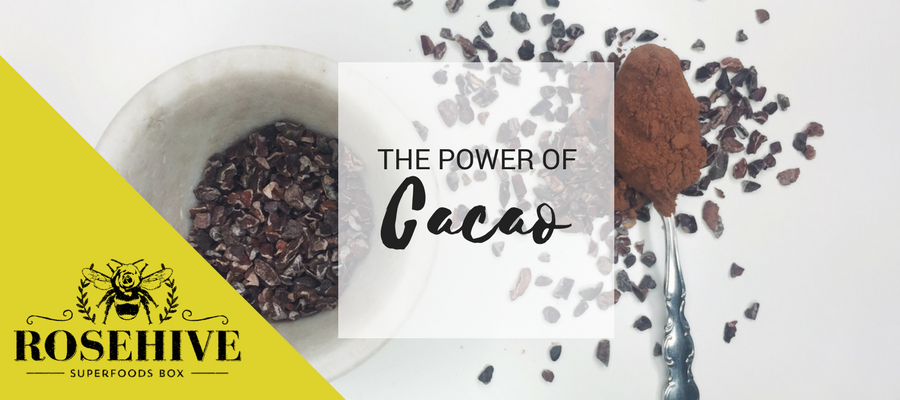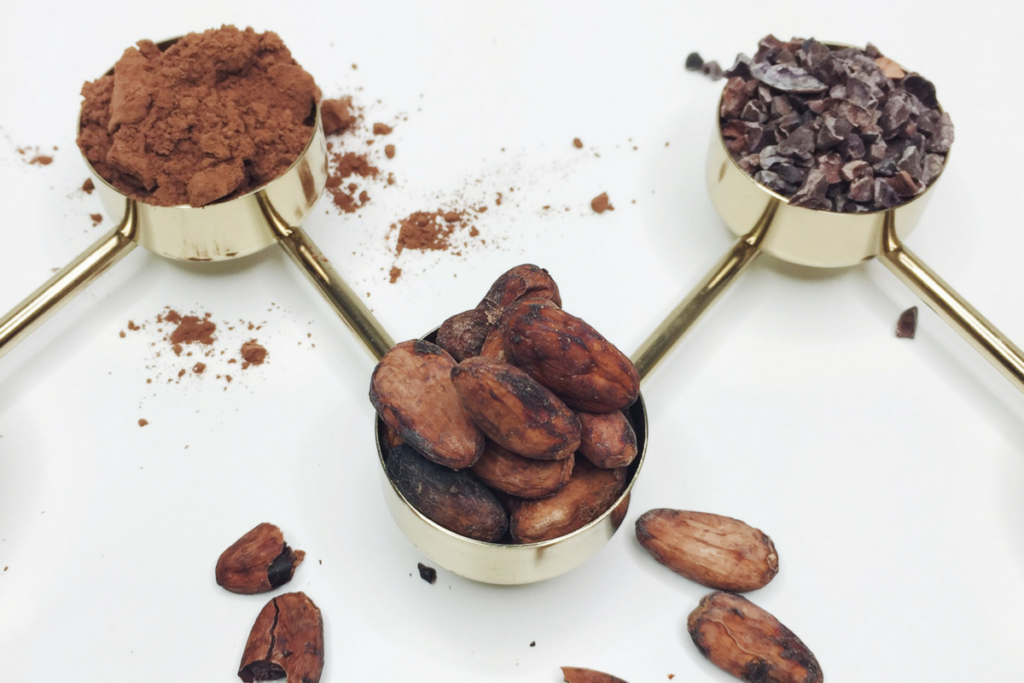
The process from cocoa pod to a finished, ready to eat, nutrient-dense chocolate bar has always fascinated us. We recently toured El Trapiche in Costa Rica where we were given an in-depth tour and learned how to make our own chocolate from (fermented, who knew!) cocoa beans. The whole process is crazy and creative and we’re breaking it down for you! We are also diving in to the amazing history and nutritional components of eating chocolate. Enjoy!
From Cocoa to Chocolate
Step 1 the tree to harvest: The cocoa tree – Theobroma Cacao – grows in tropical heat. After five years, it starts producing cocoa pods and takes about 6 months to fully grow them to be harvested. The cocoa tree produces pods only twice a year.
Step 2 fermentation: A cocoa pod is cut open to expose the fruit pulp inside – it contains about 40 to 50 seeds known as the cocoa bean. Beans are then left to naturally FERMENT (!) for five to seven days. This natural process removes any of the remaining fruit pulp around the beans. During fermentation, the beans change from gray to brown to purple and develop their aroma. After fermenting, the cocoa beans are spread out and left to dry in the sun for about six days.
Step 3 transforming cocoa beans into chocolate: Cocoa nibs are then roasted, which develops their aroma. In special grinders, nibs are ground to a very fine, liquid mass, the cocoa liquor. This is one of the main ingredients of chocolate. Cocoa liquor can be further processed into two different components: cocoa butter and cocoa powder. However, it can also be used directly as an ingredient in chocolate.
Step 4 from cacao nibs to liquor: Cocoa nibs are roasted, which develops their aroma. In special grinders, nibs are ground to a very fine, liquid mass, the cocoa liquor. This is one of the main ingredients of chocolate. Cocoa liquor can be further processed into two different components: cocoa butter and cocoa powder. However, it can also be used directly as an ingredient in chocolate.
Step 5 from cocoa liquor to chocolate: Depending on the kind of chocolate, different ingredients are used: Dark chocolate: Cocoa liquor + cocoa butter + sugar; Milk chocolate: Cocoa liquor + cocoa butter + sugar + milk powder; White chocolate: Cocoa butter + sugar + milk powder.
 Cocoa vs. Cacao:
Cocoa vs. Cacao:
Cacao is the purest raw form of chocolate known as the “food of the Gods.” This powerhouse of a bean is one of the highest natural sources of magnesium and antioxidants while being rich in manganese, iron and chromium (great for blood sugar control). Containing Theobromine, cacao enhances mood and brain function. It is ideal for muscle contraction, cardiovascular health, PMS symptoms and energy. Cacao also contains PEA a “love” chemical as well as anandamide- a neurotransmitter of bliss. While the two have the same origin, the difference lies in the details. Cocoa is processed and heated to mellow the flavor, losing somewhere between 60% and 90% of its nutrients, and cacao is left in its purest form, maintaining a higher level of vitamins, minerals and micronutrients. Cacao can be found in several forms, the most widely available being cacao nibs, which are the crushed shells of the beans themselves, and cacao powder.
The Power of Cacao
Raw cacao is one of the world’s most nutrient-dense and complex foods. It contains more than 1,200 active ingredients, and 10% of its dry weight consists of antioxidants. In fact, cacao contains a greater volume of antioxidants than blueberry, goji berry, açai berry, red wine and pomegranate combined. Cacao is also a rich source of magne-sium, iron, chromium, sulfur, copper and zinc. Probably the most unique properties of cacao are those related to brain functions and feelings of well-being. Chemical compounds in cacao such as anandamide and theobromine, magnesium and monoamine oxidase inhibi-tors (MAOIs) affect the mind and body and can reportedly lead to feelings of being “high” – though not in the sense of being intoxicated.
Another mood-enhancing compound found in cacao is PEA or phenethylamine, which triggers the release of endorphins and pleasurable opium-like neurochemicals. These often release naturally when we fall in love and during sexual activity. (The only other food on earth that contains PEA is blue-green algae)!
The History of Cacao
Cacao, Theobroma, means “food of the gods.” The first known people to use cacao were the South-Central Mexican Ol-mecs nearly 4,000 years ago. Mayan cultures also used great amounts of cacao, especially for shamanistic purposes and in various rituals, which were later adopted by the Aztecs. The English word “chocolate” comes from the Aztec “xocolatl,” meaning “bitter water.” Until as recently as 1887, cacaobeans were used as money in Mexico City. Later on, Europeans turned the medicinal superfood into an unhealthy confection known as milk chocolate, by adding refined sugar and milk powder. Today, cacao is the world’s most widely eaten nut!
Choosing Quality Cacao
When choosing your chocolate, consider this:
⇢ Opt for dark chocolate, 80% cacao is ideal
⇢ Avoid ingredients like palm sugar, trans fats, butter and margarine
⇢ The less ingredients the better: opt for chocolate where the first ingredient is cacao or a chocolate derivative, with sugar low on the list
More Cacao means:
- Unrivaled antioxidant content
- Mood uplifting theobromine
- Natural energy
- A healthier heart
- Magnesium for healthy muscles
- Blood supporting iron
- Nutrients for beautiful hair, skin, and nails
How to Use Chocolate:
Cacao can be used similarly to cocoa powder, though the taste is somewhat different and may take some getting used to, especially if you’re more accustomed to traditional chocolate. Think of cacao as dark chocolate and cocoa powder as milk chocolate — similar but different. Once you’ve developed a taste for it, cacao lends itself to everything from sweet desserts to savory sauces (think mole sauce). Add it to smoothies and hot drinks (stirred in your morning coffee), chia pudding, yogurt or oatmeal. It’s also a great addition to baked goods and raw desserts.
May’s Rosehive Superfoods Box Theme is Coffee, Cacao + Coconut. Enjoy!


